

Dusun IoT Bluetooth gateways are composed of Bluetooth low energy wireless module to exchange data with smart Bluetooth/BLE compatible devices like beacons in real time, and send data securely and reliably to cloud via Wi-Fi/Ethernet/LTE.
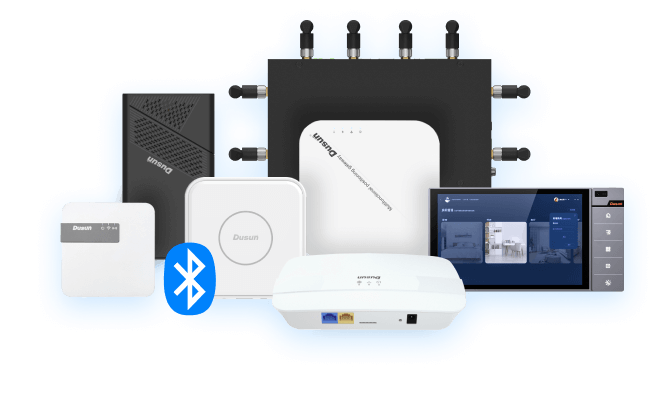

Bluetooth gateway is an IoT device that reporting the status of Bluetooth devices and beacons to network servers, which execute decisions as well as data visualization, and forward the command from the cloud to end BLE devices using high bandwidth networks like Wi-Fi, Ethernet, or LTE at the same time.
Dusun IoT offers a diverse selection of BLE gateways built on a variety of SoCs and MCU to assist enterprise developers in swiftly customizing their Bluetooth Low Energy gateways for system integration and proof of concept (POC). Expert FAE team supports SDK, API, and firmware programming. Data collection, bi-directional communication, interior location application, and numerous indoor and outdoor scenarios are all enabled.
Bluetooth to WiFi gateways using MTK WIFI-integrated SoCs are designed and built for premium network devices across several applications including routers, repeaters, gateways, etc. Bluetooth Low Energy WIFI gateway bridges the gap between non-IP BLE devices and the Internet, allowing for remote operation via mobile APPs. Bluetooth Scan, Connection and bi-directional Connection supported.
Silicon Lab & Nordic high quality BLE modules, support BLE 5.2; A single Bluetooth gateway can manage up to 32 BLE end device; FEM Support.
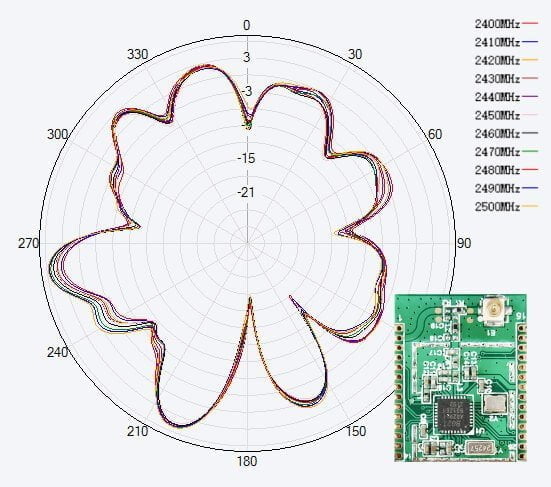
Support various Bluetooth feature enhancements for different solution requirements, covering BLE Mesh, BLE Long Range, BLE AOA, etc.
All bluetooth gateway adopts modular design, which can be quickly tailored by excluding or adding components and features. Muti-protocols support for various applications (Zigbee, Z-Wave, LoRaWAN, Wi-Fi, LTE, etc).
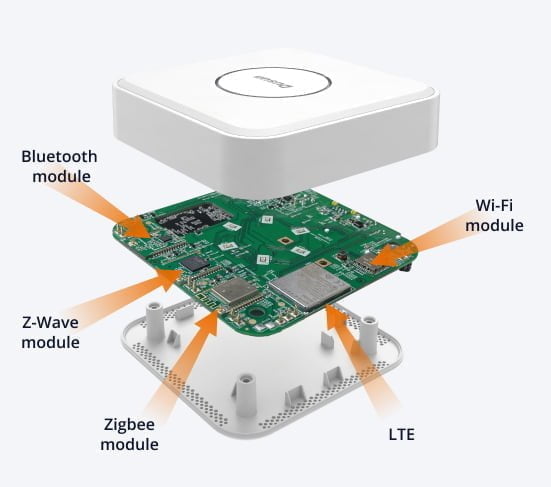
BLE gateways are fully tested and ready International certifications like BQB, FCC, IC, FAC, WPC, KC, NTC, RCM, and SRRC, etc.
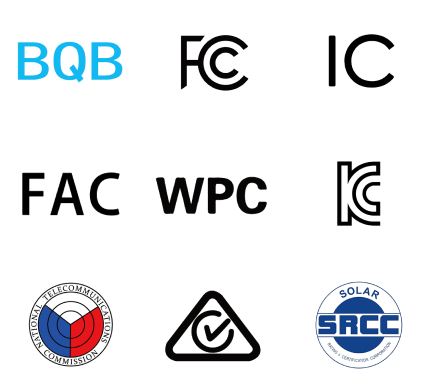
Dusun IoT provides comprehensive, rigorously tested development resources, ensuring high reliability and efficiency. Our expert FAE team offers personalized one-on-one support for customers addressing technical challenges during Bluetooth gateway secondary development, accelerating time-to-market and gaining a competitive edge.
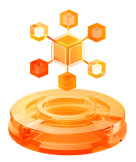
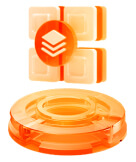


When establishing an IoT solution, a bluetooth smart gateway is the ideal choice in the following situations: The sensors are situated in a remote location, maybe only accessible via cellular connection, and there is no other way to link the sensor to the network (we’ll investigate those choices in a bit). For security purposes, a closed or dedicated network is necessary.
Dusun IoT offers Bluetooth Gateway for various applications, including RPM (remote patient monitoring), RSSI location tracking, industrial automation, building automation, BLE mesh lighting contorl, V2X(Vehicle to Everything) and so on.
Bluetooth gateway acts like a bridge between BLE devices and other high bandwidth networks such as Wi-Fi, LTE 4G or Ethernet. Bluetooth IoT gateway receives data in real-time from BLE beacons and sensors, and sent the data reliably and securely to the cloud server, so as to off security alert, personnel and asset tracking and location, and other reporting uses.
When we say Bluetooth gateway, in most cases, we are talking about BLE (Bluetooth Low Energy) gateways. The Bluetooth gateway is designed to communicate with BLE end devices. A BLE device cannot interact with a Bluetooth Classic device. Furthermore, BLE devices are designed small size and long lifespan because of BLE’s feature of low-power consumption. Following are the detailed interpretation:
Idle State: A BLE-enabled device’s radio only wakes up when necessary to save power. When a BLE device wants to send or receive data, the LE radio switches on to execute the essential functions swiftly and then disconnects. This feature determines that BLE radio is appropriate for sending tiny data packets on a regular basis, ranging from once every second to every few days.
Shorter Connecting Time: Because there are fewer RF channels available for connection, BLE requires less energy, resulting in speedier connections and less scan time.
Smaller Data Packet: Bluetooth LE data packets are much smaller than Bluetooth Classic data packets. When encoding and decoding, smaller packet sizes necessitate less computing cost. This cuts down on electricity use.
Asymmetric Design: The BLE protocol employs an asymmetric design to assign responsibilities to devices that wish to connect; one must play a Central role, while the others must play a Peripheral role; the resource-restricted devices performs the least work. Central device have higher processing power and battery capacity, like BLE gateways. Peripherals, on the other hand, are often low-processing-power devices with limited energy resources, such as fitness trackers, heart rate monitors, and so on.
To view more detailed explanation on difference between BLE vs Bluetooth gateway, please view this article.
Of course, yes. We will release an API interface for device connection if your BLE devices are from third-party manufacturers, such as BLE humidity sensors, watches, door locks, and so on.
Data acquisition: If you use our Bluetooth gateways to connect BLE sensors and collect data, you may utilize the gateway directly. Our Bluetooth Low Energy internet gateway will collect advertising data from sensors and upload it to the backend.
Bi-directional transmission: If you want to utilize Bluetooth gateway to operate door locks and switches, record operation times, and any other applications, you must supply some device parameters such as UUID, and the Dusun IoT FAE team will assist with downlink device connection.
The working principle of BLE gateway is mainly divided into three steps:
Communication protocols: TCP, UDP, and MQTT are the three most often used ones.
Data format: The Bluetooth gateway collects data, which is typically packed and transferred in JSON standard format to the cloud platforms.
Extended application: indoor positioning on BLE gateway is based on the Bluetooth positioning algorithm. For details, please refer to DSGW-200 indoor positioning gateway
Dusun Bluetooth beacon gateway can adapt to Apple iBeacon, Google Eddystone Beacon, and AltBeacon to help your Bluetooth location tracking solutions. In addition to a web interface that allows you to easily set up and update your firmware over the OTA, Dusun also provides a standard Beacon2MQTT API interface to a public MQTT server or your private server.
Dusun Bluetooth GATT gateways can connect 32 devices at the same time, and support a variety of Bluetooth GATT profiles, such as IoT medical devices. Besides, Dusun provides a standard BLE2MQTT API interface, quickly parsing your device data and connecting to MQTT server.
BLE mesh network can cover a huge area of physical areas and contain a large number of Bluetooth devices simultaneously. Bluetooth low energy mesh network is specially designed for building large-scale device networks. Therefore, Bluetooth mesh gateway is the best choice for building automation, smart sensor network, and other IoT solutions.
BLE Mesh Gateway | Smart Bluetooth SIG Mesh Gateway – DusunIoT
If you have a connection needs up to long range Bluetooth 1km, Dusun Bluetooth long range gateway is your best choice. Our long distance Bluetooth gateways have a battery life of nearly five years to meet your long time uses. What’s more, thanks to Bluetooth Ecosystem, there is a cost-effective way to create more accurate tracking and monitoring for indoor and outdoor devices.
Dusun has been a leading roam Bluetooth gateway manufacturer. Our Bluetooth gateways allow you to roam among several separate rooms and halls without worrying re-secure the handshake and re-Bluetooth pairing. Dusun roam Bluetooth technology can help your Bluetooth device always stay connected within Bluetooth coverage area. The users’ service connection is maintained during Bluetooth roaming without human intervention, or changing to the Bluetooth protocol and terminal.
Bluetooth gateway’s transmission range is a key factor that affects the range and reliability of communication between Bluetooth devices. Bluetooth gateway transmission distance are mainly influenced by:
Bluetooth versions: The transmission distance increases with Bluetooth version iteration. Different Bluetooth versions have varying transmission range. The maximum transmission distance for BLE 5.0 is about 200 meters (for reference only). You can explore more Bluetooth version comparison here.
Obstacles: Obstacles have an impact on the Bluetooth transmission distance. A Bluetooth signal, for instance, experiences resistance while travelling through walls, which makes the signal weaker.
Power strength: The Bluetooth transmission range is increased in proportion to the gateway’s power. The power strength of the gateway will have an impact on the reliability and transmission speed of remote Bluetooth device connection. Explore how to set up a Bluetooth long range transmitter gateway here.
Other wireless interference: Other wireless signal interference may have an impact on the Bluetooth transmission range. For instance, The transmission distance of Bluetooth may be decreased if nearby Wi-Fi signals interfere with Bluetooth transmission.Explore more on Bluetooth Long Range Transmitter here.
Adjust the gateway power: The strength and distance of the Bluetooth signal may be efficiently increased by modifying the power of the gateway (you can add a signal amplifier), which will improve the stability and range of Bluetooth transmission.
Optimize device distance: By maximizing the distance between Bluetooth devices, you may prevent interference and signal attenuation.
Use Bluetooth mesh topology: The efficiency and dependability of Bluetooth device connection may be increased by using distributed Bluetooth mesh network technology. You may interested in BLE mesh gateways.
Reduce obstacles: reducing environmental impediments like walls can increase the stability and range of Bluetooth transmission.
The Bluetooth gateway is primarily used to address the issue that the BLE terminal device cannot transmit data over the Internet. Working together with BLE sensor/beacon network, PaaS/SaaS, Bluetooth gateways serves as a bridge hub to connect BLE terminal devices and upload large amounts of data captured by terminal devices to the cloud server or data center, making BLE terminal devices successfully access the Internet. Get to know details of what is a Bluetooth gateway.
This is an efficient, real-time, strong-signal and short-distance IoT solution to monitor multiple systems in a building, manufacturing factories, or cities in real time, which enables fast reaction to concerns or abnormalities, boosting the overall efficiency and safety. Bluetooth gateway can be used for remote bi-directional communication with BLE end devices, issuing commands to operate BLE end devices.
Using Bluetooth gateways is also a cost-effective solutions because Bluetooth are comparatively affordable than others and you don’t have to exchange your legacy infrastructure as BLE gateways are reasonably simple to connect into your existing systems.
Yes, we have already use Home Assistant on Bluetooth gateway for BLE mesh lighting control in plant factory. Here is a guideline about how to configure BLE MESH add-on on our Home Assistant Bluetooth gateways for reference. BLE mesh is also widely used in smart home, so if you want to use Bluetooth gateway Home Assistant for home automation, welcome to consult our sale persons.
For tracking and proximity sensing indoors, BLE is a superior choice. Compared to WiFi, BLE offers more precise proximity data, but its maximum wireless connection range is only 30 meters. As an alternative, WiFi works better in public spaces. In order to correctly pinpoint the precise position of another device, it employs factors like SSID and MAC. By measuring a device’s access points, this is accomplished. Depending on the version, WiFi can also detect proximity beyond 100 feet.
With a maximum range of 240 meters (800 feet) between compatible devices, Bluetooth 5.0 significantly increases range. You can see more difference between Bluetooth versions and ranges here.
All of the software on Dusun IoT gateways are compatible with OpenWRT, Linux, Debian, Ubuntu, Buildroot, and so on, and is capable of keeping a steady connection with up to 16 devices and transmitting data simultaneously.
The bandwidth between Dusun Bluetooth gateway and typical BEL Bluetooth devices can reach up to 50KB/s when the communication is stable. Exceeding this rate may result in data packet loss, but it is also required to refer to the individual application case. It is strongly advised to seek the advice of Dusun IoT’s experienced engineers.
By default, the Dusun Bluetooth gateway in the OpenWRT OS supports Bluetooth stack by Silicon Labs as well as API interfaces that go along with it.
Meanwhile, We have developed DSGW-210 IoT gateway to apply the bluez protocol stack, which is compatible with a variety of applications that correspond to Bluetooth.
The BLE single-mode Bluetooth module is currently the application set as the default on the Dusun Bluetooth gateway. This module only supports Bluetooth device communication connections for Bluetooth 4.0 and higher.
Dusun Bluetooth gateway in the OpenWRT OS places a cap on the number of devices in each reporting cycle of 400ns, which is sufficient to satisfy the requirements of most common Bluetooth IoT application scenarios.
Dusun Bluetooth gateways in the OpenWRT OS can offer an MQTT API interface that is suitable for general uses. All you have to do is to send a connection that is based on the free body communication protocol to the cloud through the interface. From there, you can perform operations such as read attributes, write attributes, and notify.
If both Bluetooth gateways and Bluetooth devices being used are manufactured by Dusun, you can simply assign the remote server address to your own platform on the gateway configuration page. After doing so, you can easily receive the data transmitted by your Bluetooth devices. Download our Bluetooth gateway configuration manual and develop BLE 5 application guideline here!
Dusun Bluetooth gateways use chips manufactured by Silicon Labs. While the Bluetooth chip in the Bluetooth module is manufactured by both Silicon Labs and Nordic.
The gateway-side Bluetooth module is running the most recent version, Bluetooth 5.3. This latest edition improves the efficiency of peripheral device battery life extension. In particular, Bluetooth 5.3 improves periodic advertising to allow Bluetooth gateway devices to spend less time and power processing redundant data, and enables Bluetooth gateways to swiftly switch between low and high power cycles, assisting peripherals in power conservation. Meanwhile, Bluetooth 5.3 adds more strong and reliable wireless connections by performing channel classification to find the appropriate channel to use, decreasing mismatches chances. Bluetooth 5.3, on the other hand, introduces encryption key size management, allowing developers to select a minimum encryption key length, boosting overall security and efficiency. On the other hand,
Some of customers asked whether their BLE devices can be compatible with ours. You don’t have to worry about this as long as you use standard Bluetooth SIG protocols. The latest versions are backward-compatible and can work with lower Bluetooth protocols.
Last but not least, Bluetooth 5.3 support a variety of the most recent Bluetooth technologies we mentioned above.
Zigbee gateways integrated with the Bluetooth protocol can control Zigbee and BLE devices simultaneously, saving cost. This is nearly an industry trend, with many manufacturers’ wired and wireless gateways using Bluetooth as a function complement. Explore DSGW-030 Zigbee Bluetooth Gateway here.
Some may concern about stability when using multiple protocols. Actually, different wireless SoCs have its own bandwidth and processing capability, and there are another powerful MCU processors like RK3328 or NXP i.MX6 ULL to control all communication modules. So you go not need to worry about they are occupying the same memory and may influence the stability.
By Applications
By Cloud Platforms
| Cookie | Duration | Description |
|---|---|---|
| cookielawinfo-checkbox-analytics | 11 months | This cookie is set by GDPR Cookie Consent plugin. The cookie is used to store the user consent for the cookies in the category "Analytics". |
| cookielawinfo-checkbox-functional | 11 months | The cookie is set by GDPR cookie consent to record the user consent for the cookies in the category "Functional". |
| cookielawinfo-checkbox-necessary | 11 months | This cookie is set by GDPR Cookie Consent plugin. The cookies is used to store the user consent for the cookies in the category "Necessary". |
| cookielawinfo-checkbox-others | 11 months | This cookie is set by GDPR Cookie Consent plugin. The cookie is used to store the user consent for the cookies in the category "Other. |
| cookielawinfo-checkbox-performance | 11 months | This cookie is set by GDPR Cookie Consent plugin. The cookie is used to store the user consent for the cookies in the category "Performance". |
| viewed_cookie_policy | 11 months | The cookie is set by the GDPR Cookie Consent plugin and is used to store whether or not user has consented to the use of cookies. It does not store any personal data. |

